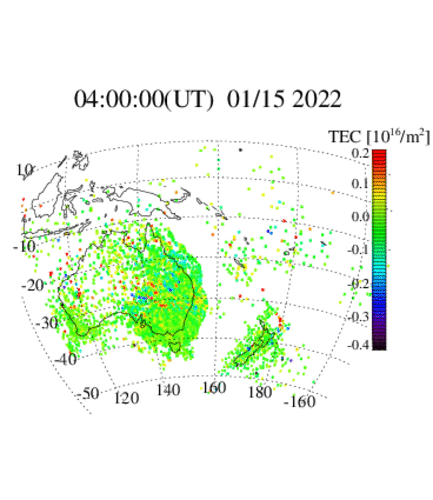Concentric ionospheric waves after the Tonga volcanic eruption based on GNSS observations
2022-01-26
The effects of a massive volcanic eruption that occurred in Tonga on January 15, 2022 were found to have reached the ionosphere, which is located at an altitude around 300 kilometers. The air vibrations caused by the eruption could induce acoustic waves propagating upward into the ionosphere, causing fluctuations in the ionospheric plasma density.
Under the collaboration with National Institute of Information and Communications Technology (NICT), Associate Professor, Dr. Yuichi Otsuka, Designated Assistant Professor, Dr. Atsuki Shimbori, Mr. Takuya Sori (Graduate School of Science D2) collected and analyzed the data obtained from more than 9,000 GNSS (Global Navigation Satellite System) receivers installed around the world. By making the two-dimensional map of TEC (total electron content) with high spatial and temporal resolutions, they have disclosed concentric waves of TEC fluctuations propagating from the volcanic eruption in Tonga.
Although concentric ionospheric fluctuations have been observed after huge earthquakes, such as the 2004 Sumatra earthquake and the 2011 off the Pacific coast of Tohoku earthquake, this is the first observation of such a large, widespread TEC fluctuation propagating from a volcanic eruption.

Caption:Total electron content (TEC) fluctuations on January 15, 2022. A star represents location of the Tonga volcanic eruption. Concentric waves of TEC fluctuations can be seen.


